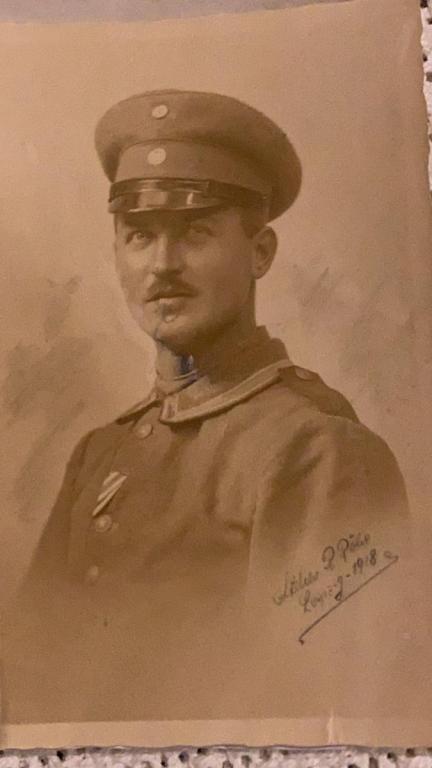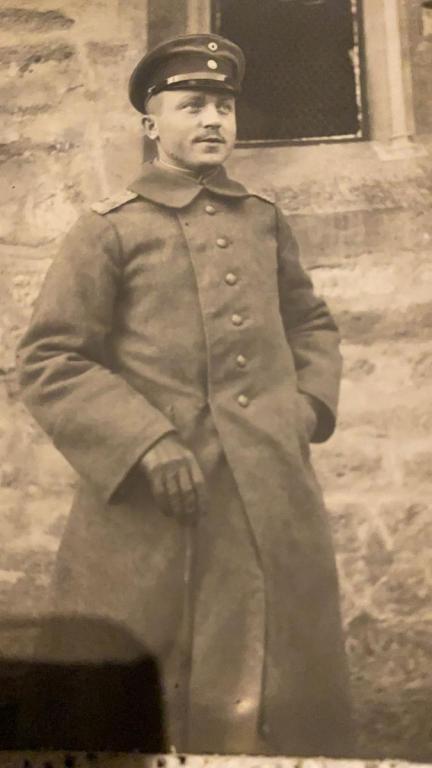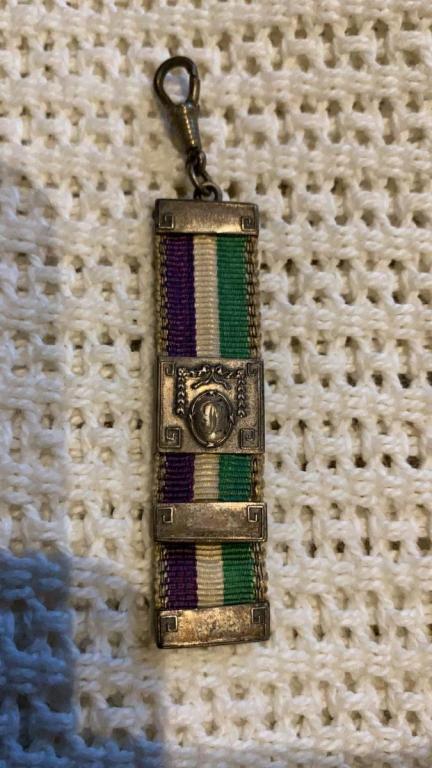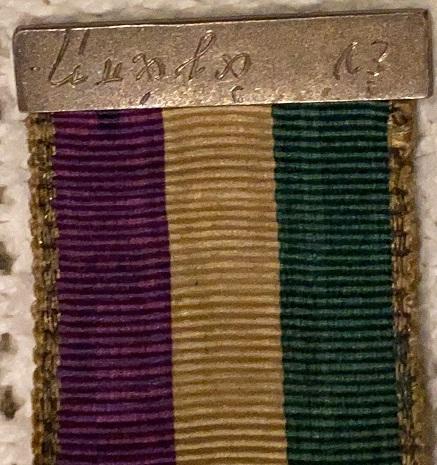
gavinmedals
Valued Member-
Posts
131 -
Joined
-
Last visited
Content Type
Profiles
Forums
Blogs
Gallery
Events
Store
Everything posted by gavinmedals
-
Really appreciate the write up on Brierly and a rare group to boot. Clearly, I should have tried harder the last time I saw it on the market a few years ago.
- 1 reply
-
1
-
Hi Rusty, I was aware of the first two medals mentioned above and had suggested that Numis reach out to them as they may possibly have had some better photos. I had not seen the one from the Dec 1997 catalogue as yet, so appreciate the time you took to compile the information. I have read through some of the old catalogues again (many of which I had digital copies of when they started issuing them in that format). In retrospect, suffice to say, there are many groups that I would love to see surface again! Just not all at once🤩
-
Hi, just noticed this thread tonight. While it is subject to confirmation, I have understood that SVB Theron's full size group is in the USA and is held by the American Smithsonian. I was following up on it at one stage and had spoken to a number of people in the search. Apparently one of his children had emigrated there and subsequently donated it to the museum. Perhaps someone on that side of the world will be in a better position to confirm this to be the case... Hi, Out of interest I thought it would be interesting to post a picture of the group of medals awarded to Lt. General Bob Rogers......Perhaps one day..!!!!!
-
Rhodesia Legion of Merit Grand Commander breast star
gavinmedals replied to Jacaranda's topic in Africa
Hi Emmanuel, somehow i missed these posts showing the GCLM and GLM orders in their cases. Just wanted to say thank you, I have never seen the cases, or for that matter, the actual awards before...... -
Hi, I have looked through some of my references and unfortunately the photos where the SAP Brigade are wearing pith helmets, I cannot see what if any badges are on them. Will have to look further. Perhaps you have already seen this, but according to the reference, Collecting South African Militaria, by D Wall, the 1st and 2nd Bn SA Police formed part of the 6th Brigade, which in turn was part of the 2nd SA Division as per the illustration below. As such they would likely have worn the Divisional Patch (as illustrated below and in the earlier chart) at least in some capacity.
-
Hi Forum, I have received the following photos of some WW I German items. I am aware that the unit can sometimes be derived from the epaulettes and the uniform. Clearly the individual had at least the EK II. As WW I German is not my area of expertise, I would appreciate any guidance from someone more knowledgeable to perhaps help identify: 1. which unit this soldier was from: the insignia on the FOB or the engraving on the reverse may provide some clues; and 2. interpret the writing on the back of the FOB. Any assistance would be greatly appreciated Regards Gavin
-
Anthony, As you are based in South Africa, presumably you have contacted the likes of City Coins and Kaplan to see what has gone through their hands over the years already. As an example reference City Coins, Auction 55, Lot 1, appears to be one that you do not have in your list above: "- Sir Harry Smith’s Medal for Gallantry named to Thos. Duncan See colour plate (silver; 33,4 mm diam.) Fitted with a plain silver clamp and loosely fitting clip suspender. The medal is in extremely fine condition and has a superb steel blue tone. Part of the characteristic metal flaws, due to the cracking of the original striking, have been removed through neat tooling. obv: A rather Eastern looking lion, be-whiskered and with very curly mane, left, with tail curled above his back, standing on a representation of the veld. above: a wreath of laurel tied with a ribbon. below: in the exergue, the date “1851”. rev: Legend only, above and around the circumference: “PRESENTED BY”; below it, in horizontal lines, “HIS EXCELLENCY” and the recipients name “Thos Duncan” engraved and finally around the lower half of the circumference, “FOR GALLANTRY IN THE FIELD.” The first, and most romantic medal of the South African series. The late Dr Frank Mitchell introduced his original article on this medal, published in the June 1955 edition of the “Africana Notes and News”, and wrote as follows: “Sir Harry Smith’s medal is to the war medal collector what the Cape triangular woodblock errors are to the philatelist or “Burchell’s Travels” to the Africana enthusiast. This medal is purely South African; it is extremely rare; it was the first medal ever worn by South Africa’s fighting men; it illustrates a most interesting period in our national history; and the details of it’s origin, its manufacture and its award are tantalizingly concealed amongst our records of the past. It has, in fact, all the ingredients which are calculated most to tickle the fancy of the discerning collector and to inspire the enthusiasm of the student”. Since then much has been written and speculated about this important and rare award. An illustration even graces the front cover of the most recent edition of Medal News (August 2005). Further details have been presented by Gordon Everson in his classic book “The South Africa 1853 Medal” and his subsequent article published in the September 1983 issue of the “Medal catalogue of the London Stamp Exchange”. However, the intrigue, romance and speculation remains. No medal roll has ever been found. Nor is it likely that all the details pertaining to the award will ever be found. What is undoubtedly factual is that the issue and award of this coveted medal was initiated by the flamboyant Sir Harry Smith, KCB, during his term as Governor of the Cape Colony. Sir Harry directly participated in numerous military field operations during the Frontier Wars of 1847 to 1852 and with all the difficulties he experienced, it is understandable that there were instances where he would have wished to reward his loyal and gallant troops in some way. His epic ride through enemy lines from Fort Cox to King Williamstown in 1851 is most often quoted. Although there was no Royal Warrant nor prior approval of the War Office for the award of this medal granted to local troops, archival records confirm that the full cost of the manufacture of both, the relevant dies as well as the medals themselves, were borne by the British Government of the time. Although he was criticized for his initiative Sir Harry obviously had his way! After it was announced that medals were to be awarded to men of the Levies who had distinguished themselves, the Duke of Newcastle was particularly indignant at the thought that Sir Harry had exceeded his authority. In reply to this criticism, Sir Harry stated, that as he was the Queen’s representative, he deemed himself authorized to grant such a distinction to Local Corps and had therefore “issued a General Order granting medals to those who had nobly and gallantly distinguished themselves, a measure attended with great success”. This medal should also be viewed in context of the then recent awards of both the Naval and Military General Service medals promulgated in 1848/49 (and numerous others) and the omission of a similar award for South Africa (subsequently sanctioned in 1854). As an award for Gallantry it may perhaps be viewed as a precursor to the coveted DCM approved by the Royal Warrant of 1854. An extremely rare and historically important gallantry medal." Regards Gavin
-
Hi, at the risk of sharing info that you likely may already have, there is a Unit history that was published in 1972. It is called "The Police Brigade, 6 S.A. Infantry Brigade 1939 - 45" by Brigadier F.W. Cooper DSO. I believe they had the same uniforms as the UDF and a unit / brigade patch (need to check), that was circular in form with the top half coloured in gold and the bottom in green. I stand to be corrected on this, but I suspect the patch, which was worn on the upper sleeve, was the SA Police Brigade patch made up of two Battalions of regulars and one from the reserves
-
Hi, since my last post in February (has it been that long?), I have come across some additional information that may be of interest. His serial number of 323747V falls in the block of numbers allocated to 2 (Cape) Bn, 1 Reserve Brigade. Just a heads up, it is a handwritten list and "2 (Cape) Bn" part of the unit is difficult to make out clearly.
-
I have not posted for some time, so am in the process of catching up, when I noticed this thread. Not sure if you have reached out to Dewald as yet, but in looking at his force number of 21 723, some info can be gleaned: 1. Based on the block numbering used by the Union Forces, it indicates that he was a member of "Regiment President Steyn" 2. The South Africans who went "up North" were all volunteers. He was amongst the first 22 000 volunteers for the UDF.
-
Distinguished Service Order
gavinmedals replied to Leuchtturm's topic in Great Britain: Orders, Gallantry, Campaign Medals
Agree with Paul, although it is a great miniature group with the old ribbons. Congratulations on getting it. -
Sailor Malan's medals
gavinmedals replied to milhistry's topic in Great Britain: Orders, Gallantry, Campaign Medals
Great to see and thank you for the link to the article. Believe it or not I own two biographies on him and not one had a photo of the group. -
Sailor Malan's medals
gavinmedals replied to milhistry's topic in Great Britain: Orders, Gallantry, Campaign Medals
Hi, I was at the museum last year Sept and it was definitely not on display. Perhaps they have a photo in the library. Good luck with that.... -
Sailor Malan's medals
gavinmedals replied to milhistry's topic in Great Britain: Orders, Gallantry, Campaign Medals
Hi, I recall seeing the group at the SA Museum of Military history (renamed as above) many years ago. At one point there was a reported theft of a VC group, after which I was told the family had reclaimed the group. Unfortunately this is anecdotal at best.





